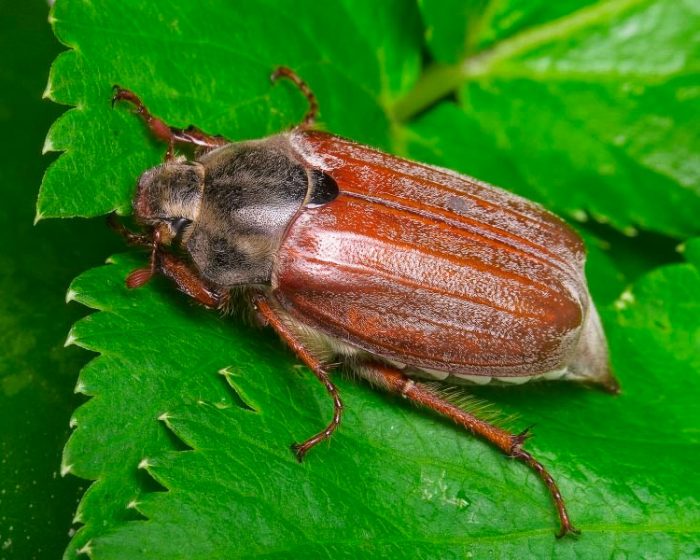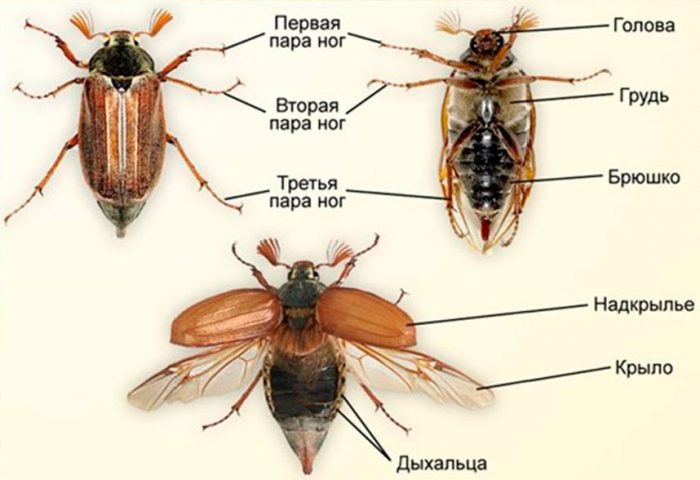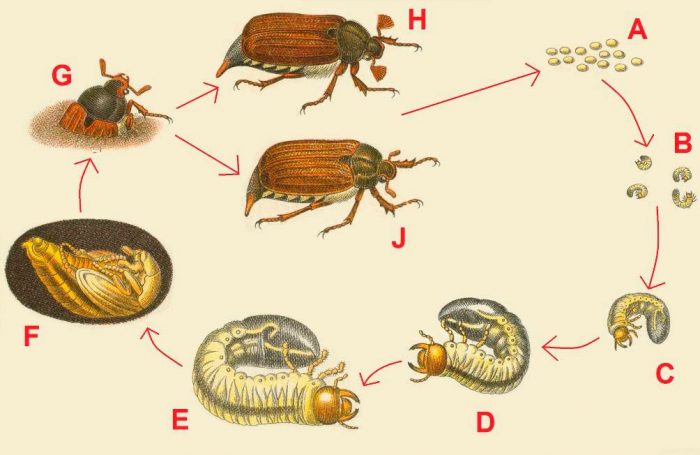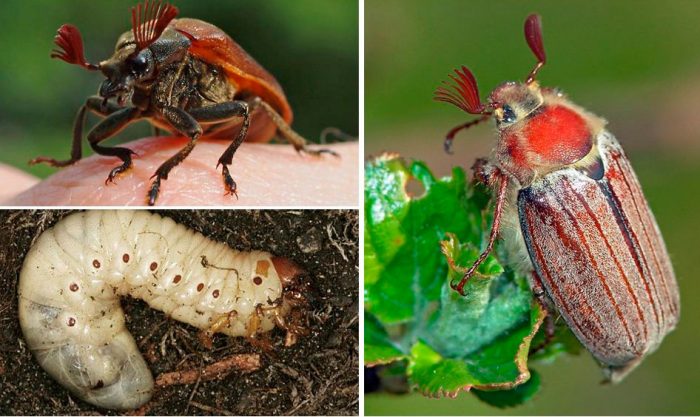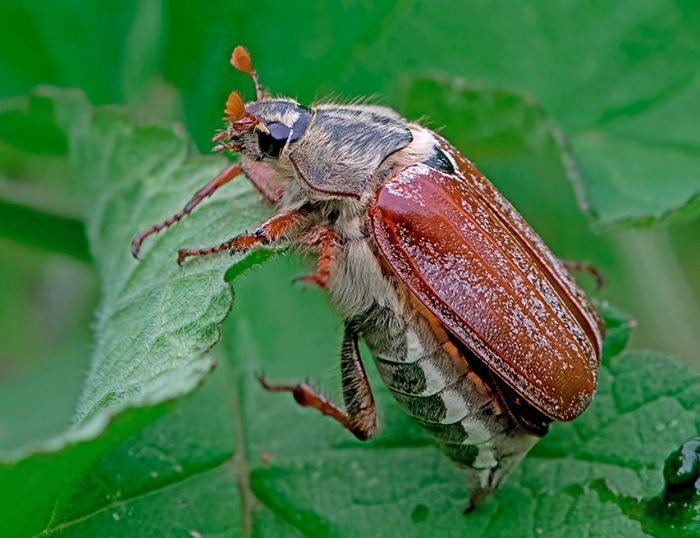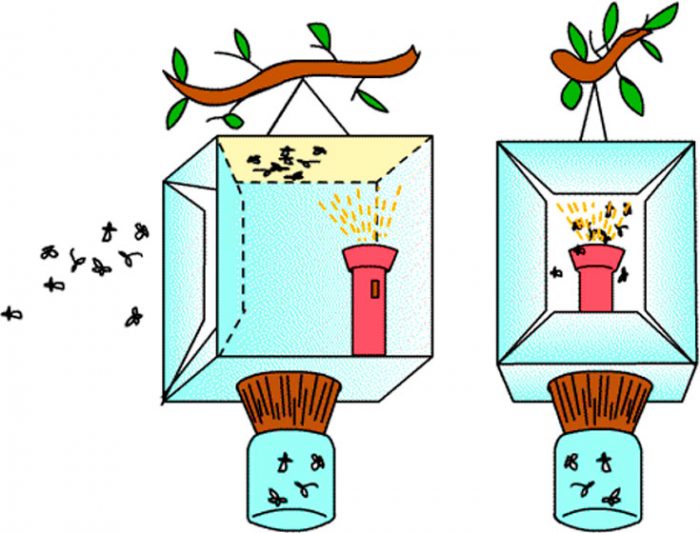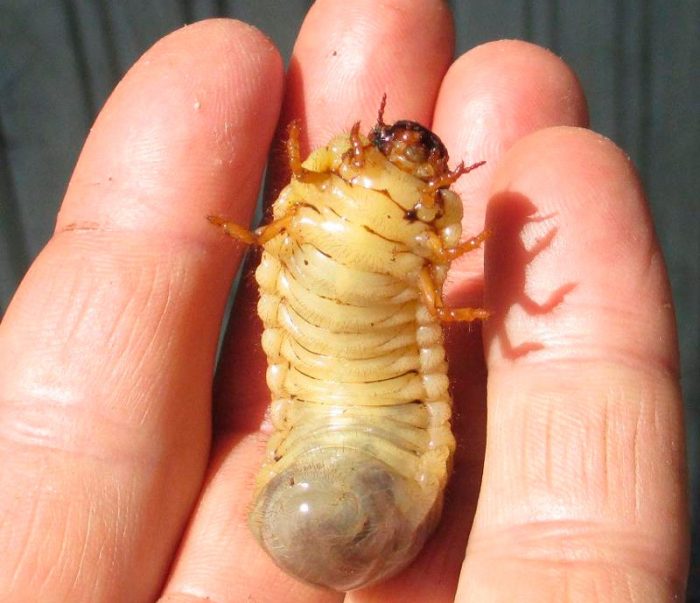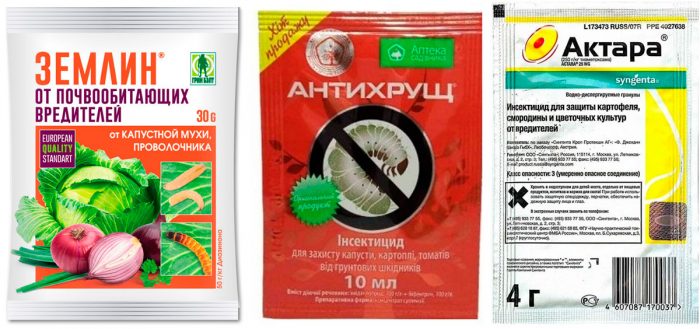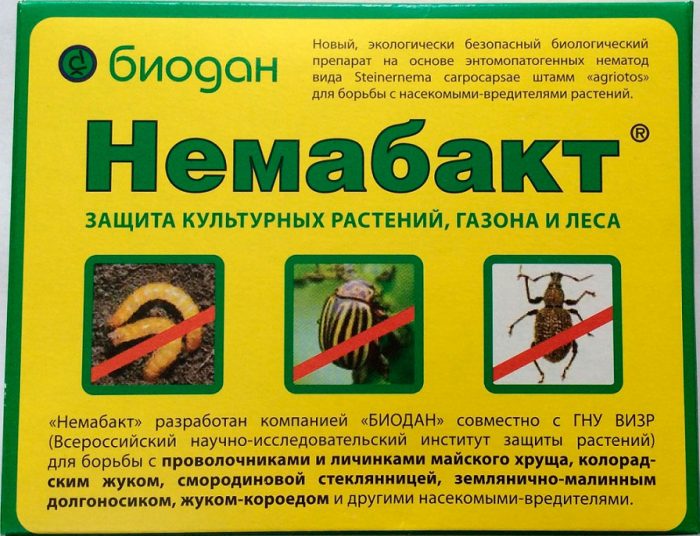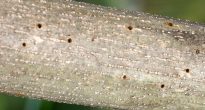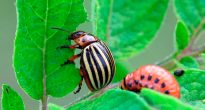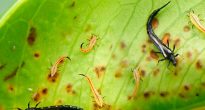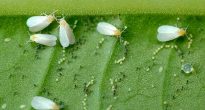The May beetle insect (Melolontha), which is also called the May beetle, is part of the Lamellar family. In nature, it lives in Europe and Asia. Back in the 19th century until the mid-fifties, May beetle was very widespread, and at the same time it could cause significant damage to agriculture. Then there was a sharp decline in the population of such a pest due to the massive use of pesticides. However, this insect to this day can greatly harm both private gardens and orchards, and agricultural plantings.
Content
Features of the beetle
Structure
The May beetle is a fairly large insect. Its length can reach 3.15 cm. The body of the beetle consists of a head, chest, abdomen and legs. The shape of the insect's body is oblong-oval, convex and barrel-shaped. On the surface of the body there are small hair-like scales. The scales on the dorsum and head are longer and form longitudinal stripes. The body can be brown-red or black, and the beetle's elytra are red-brown or brown-yellow. The surface of the head and back has a light green tint.
There are two varieties of May beetles: absolutely black beetles and red beetles, the legs and pre-dorsum of which are pale yellow or red. Most often, red beetles in nature are found in the northern regions in open areas with little shade. And black beetles live in the southern climate in the shade. May beetle is sometimes confused with green bronze, which is listed in the Red Book, this insect is absolutely safe for agriculture.
On the chest of the May beetle there are 3 pairs of walking legs, each of them attached to a certain segment. There are hairs on the surface of the legs, and they end in claws, with which the beetles cling to the foliage and the surface of the bark. The senses and mouth are located on the head, while on the lower lip there are 2 probes, which are organs of taste and touch. On the sides of the head there are 2 complex faceted eyes, in front of them there are 2 antennae with expanded plates - these are the organs of smell. In the female, these organs are much less developed than in males. The insect can tilt its head, but it is not able to turn it left and right. In May beetle, the chest is connected to the abdomen. The upper part of the abdomen is closed by the elytra, from under them only the pointed tip of the abdomen protrudes.Under the elytra on the abdomen are the wings, as well as the spiracles, which are small holes.
Depending on the sex of the insect, the structure of the beetle may differ, for example, on the surface of the elytra of females there is a dense coating consisting of white scales. In addition, in males, the antennae have the shape of a large curved club, which consists of seven plates. In females, the club is not as large as in males, and it consists of six plates.
Development stages
May Khrushch has a life cycle of 3-5 years. The life span of a beetle directly depends on climatic conditions. For almost its entire life, the beetle lives underground, and it flies only from 30 to 40 days. After only 15–20 days after emerging from the pupa, the female is already ready for reproduction. When mating occurs, the female arranges egg-laying in the ground at a depth of 100 mm. After that, the female again goes in search of the male and again arranges egg-laying in the ground. There can be up to four such cycles, with only one female in general capable of laying about 70 eggs. When the female makes her last egg-laying, she dies. In length, eggs reach up to 0.3 centimeters, and in width - up to 0.2 centimeters, and they are painted in an off-white color. They are very soft at first, but become hard over time. The duration of egg maturation is from 20 to 35 days, and in some cases, when conditions are extremely unfavorable for their development, then the larvae of them may appear only after about 50 days.
Larvae appear from the eggs, they are thick and have a curved shape, their color is light, and the head is yellowish or brown. The larva has 3 pairs of small legs, which are very tenacious. During the first summer period, the larvae eat humus and roots of various herbs. For the winter, they burrow into the soil to a depth of 150 cm, and with the onset of the spring period they get out closer to the root system of young trees, it is they who eat them during the next season. Already in the third year, the length of the grown larva can vary from 4.5 to 6.5 cm, at which time it is able to gnaw through the strong roots of adult trees. The transformation into a pupa is observed in the fourth year, in the soil it can be found at a depth of 0.2 to 0.4 m. The pupa has a shape that is very similar to the adult May beetle, but its wings and head bent under the chest are slightly shorter. The pupa is about 2.5 cm long and up to 1.8 cm wide. The duration of this phase of development is 15–30 days, and it begins in the last days of July or the first days of August. Then the pupa becomes an adult beetle, and it falls into suspended animation before the onset of spring. Around May, after warm weather sets in and buds bloom on the trees, May beetles emerge from the ground, fly and lay eggs.
How can the May Khrushchev harm?
An adult beetle eats young foliage of various trees, for example: birch, poplar, oak, maple, aspen, mountain ash and linden. And in garden plots, it can harm such fruit shrubs and trees as: sea buckthorn, black currant, cherry, plum and apple tree (the beast loves her most). An insect can harm even lilacs, while herbaceous crops are not of interest to him at all. Experts noted that once every 3-5 years, there is a massive May beetle years. Black beetles develop in a five-year cycle, while red beetles develop in a four-year cycle. In these "flying" years, insects are able to eat all the foliage on trees for 4–8 weeks. However, in the intervals between these "flying" years, it is almost impossible to meet a large number of beetles.
Beetle larvae can also harm various crops.They damage the root system of various vegetable crops (for example: corn, potatoes and any seedlings), strawberries, lawn and parts of weeds, as well as the roots of ornamental and fruit shrubs and trees. One larva, which is 2 years old, can eat the roots of a biennial pine in just 7 days. And for an older larva, which is 3 years old, it will only take about 24 hours.
Fighting the beetle (beetle)
With the May beetle, you can fight with several methods, and each of them is effective in its own way. Some of the methods are relatively expensive, and some of them require significant physical effort. Various methods of pest control will be described in detail below, but which one is best to choose in a particular case is up to you.
Catching beetles
To protect garden crops from the beetle, you can catch it. In order to catch an adult beetle, you can use the following methods:
- Light trap... Take a basin and coat it from the inside with grease or other viscous substance. Attach any source of light to the bottom of the basin (for example, a lantern or a candle, which must be protected from the wind). When the sun goes down, the trap is set up in the garden. Those beetles that fly into the light will get stuck in the solid oil.
- Glue traps... Make traps out of newspapers that need to be coated with adhesive. They are laid out in strawberry beds, and also hung on trees.
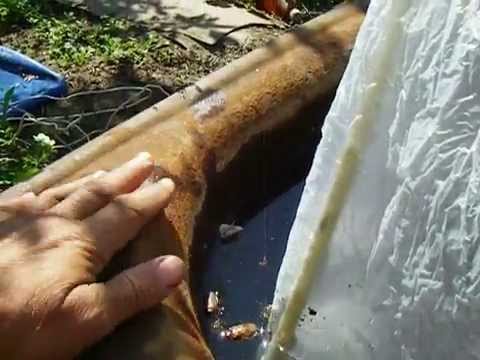

Watch this video on YouTube
Mechanical method
This method of dealing with beetles is absolutely free, but it is very laborious and time-consuming. To do this, in the summer, dig the site to a depth of 10 to 20 centimeters. But if something grows in this area, this method will not work for you.
Sodding the site
The larvae of the beetle cannot tolerate nitrogen; therefore, it is recommended to grow white clover in the near-trunk circles of trees and shrubs. Its root system recycles nitrogen, after which it distributes it to the roots of other crops growing nearby. This method of fighting larvae is distinguished by its high efficiency, as well as absolute safety for horticultural crops. In addition, white clover helps to reduce the amount of weeds in the garden.
Natural enemies
The natural enemies of beetles are various birds and insectivores. Starlings, rooks and other birds can save your site from such a pest. In order for the birds to look at your site more often, they need to be attracted, for this it is recommended to install several feeders and birdhouses.
If hedgehogs live on your site, then this is very good. The fact is that hedgehogs are able to dig out grubs from the ground, which they use as food.
May beetle remedies (preparations)
In order to free your garden plot from beetle larvae, you will need to use special chemicals. According to gardeners, the following tools are most effective:
- Zemlin... This product is specially formulated to fight against May beetle larvae and wireworms. To protect the root system of crops from beetle larvae, a glass jar with a volume of 0.5 liters by ¾ is filled with dry sand or sawdust, after which one sachet of the drug is poured into it. Mix everything well and during the planting of seedlings, add 1 tsp into each of the planting holes. the resulting mixture.
- Bazudin... This drug is used to exterminate insects living in the ground, including beetle larvae. The active substance of this agent is diazinon. The analogues of this drug are Kapkan, Dohlox and Grrom.
- Initiative... The insecticidal agent is capable of exterminating all pests living in the ground, for example: a bear, larvae of the May beetle, wireworm, etc. The agent is thoroughly mixed with the ground and poured into each planting hole during planting of various crops.
- Aktara... An insecticidal agent with a broad spectrum of action. It is equally effective both when treating plants with a spray bottle and when applied to the ground.
- Aktofit... Insectoacaricidal preparation of biological origin with intestinal action. It is created on the basis of natural highly specific neurotoxins, which easily penetrate into the pest's body and contribute to the damage to its nervous system.
- Antikhrusch... This is a disinfectant, which is a systemic contact two-component insecticidal acaricidal preparation used to control harmful insects living in the ground. It equally effectively destroys the pest at any stage of development, helping to block its nervous system.
Biologicals
Today, gardeners are increasingly using biological agents, for example, Nemabakt. He destroys the larvae of the beetle. This drug is based on an entomopathogenic nematode, which is a round microscopic worm. It lives in the soil and feeds on various insects. Using natural holes, the worm makes its way into the larva, and after 1-3 days it dies. The nematoda leaves the corpse and looks for a new larva. This product is safe for pets, humans, bees, fish, earthworms and other harmless insects.
Also, the biological product Broverin is distinguished by safety and high efficiency. It is a new generation biological insecticidal agent based on an entomopathogenic fungus. This fungus grows inside the body of the pest and, gradually growing in it, contributes to the poisoning of the larva with toxins. Then fungal spores form on the surface of the corpse, which can infect healthy larvae.
In addition to these chemical and biological agents, gardeners also use drugs: Arrivo, Decis, Confidor Maxi, Sherpa, Fitoferm, Match, etc.
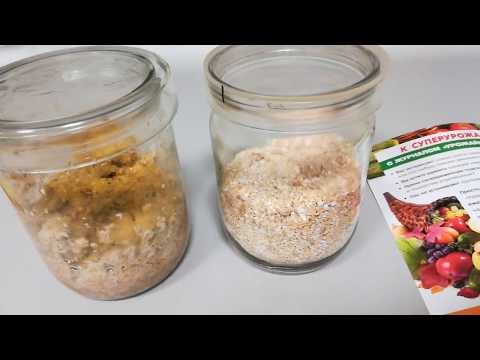

Watch this video on YouTube
Folk remedies and preventive measures
Folk remedies include sowing on the site of lupine, which is then used as green manure. Where lupine grows, there is no weed, so the larvae are forced to eat the roots of such a green manure, and they are poison for them.
Soil cultivation in spring can be considered as a preventive measure. For this, the earth in the near-trunk circles of trees and shrubs, as well as near the strawberry bushes, is spilled with a solution of ammonia (1 to 2 ml per 1 liter of water). You can also dissolve a couple of large spoons of ammonia or 0.2 kg of coarse salt in 10 liters of water; this solution can be used to shed the beds.
To destroy the larvae in the spring, it is recommended to dig up the site. You also need to regularly loosen the surface of the soil, in the aisles of the potatoes, starting from May and ending in the last summer weeks, because it is at this time that the beetles arrange egg-laying, pupate and molt. A solution of potassium permanganate (5 grams per bucket of water) will also help to save the potato crop from the beetle larvae, they spill soil near the plants. If you keep chickens, then they can be driven out into the potato field. They will not touch the potato, but they will dig up the larvae of the beetle and eat it.
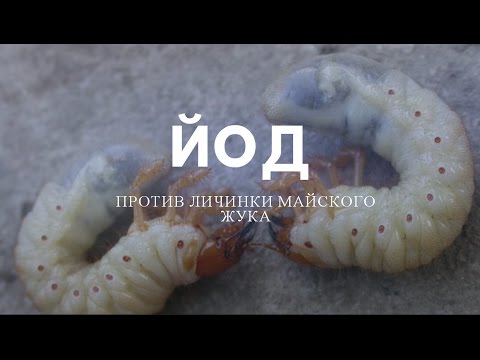

Watch this video on YouTube

